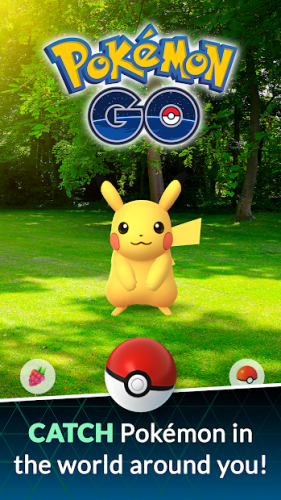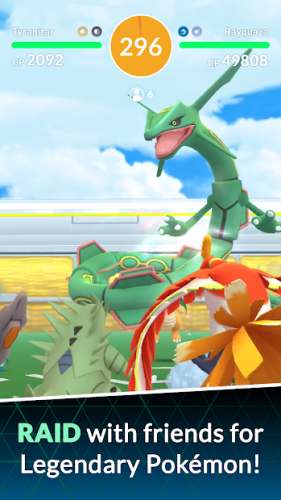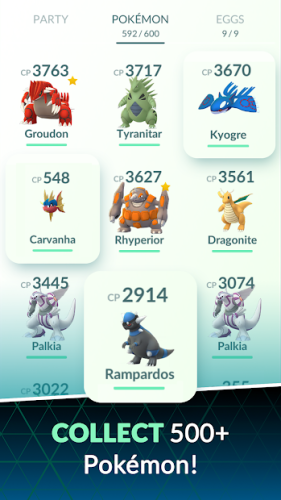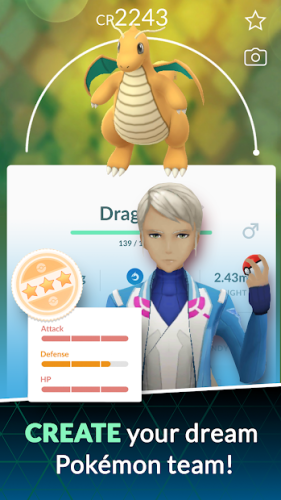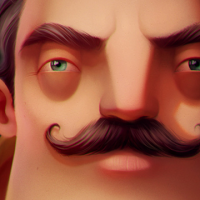Pokémon GO is an augmented reality mobile game developed and published by Niantic for iOS and Android devices. The game was first released in selected countries in July 2016. The game uses the camera and GPS of the player's mobile device to capture, battle, and train virtual creatures, called Pokémon, which appear on the screen as...
Pokémon GO
Pokémon GO is an augmented reality mobile game developed and published by Niantic for iOS and Android devices. The game was first released in selected countries in July 2016. The game uses the camera and GPS of the player's mobile device to capture, battle, and train virtual creatures, called Pokémon, which appear on the screen as if they were in the same real-world location as the player.
Gameplay
The objective of Pokémon GO is to locate, capture, battle, and train virtual creatures, called Pokémon, which appear on the screen as if they were in the same real-world location as the player. The game is free-to-play, although it offers in-game purchases.
Pokémon GO uses the camera and GPS of the player's mobile device to capture Pokémon in the real world. As players move around, their avatar moves on the game map.
Different types of Pokémon appear in different locations, so players are encouraged to explore. Pokémon can be found and captured in three ways: by seeing them on the game map, by stumbling upon them in the wild, or by hatching them from eggs.
When a player encounters a Pokémon, they can attempt to capture it by throwing a Poké Ball. If the Pokémon is successfully captured, it is added to the player's Pokédex.
Players can also battle and train their Pokémon at Gyms. Gyms are located at various places around the world, such as public art installations, historical landmarks, and major business districts.
Graphics
Pokémon GO uses a mixture of live-action and three-dimensional graphics. The live-action elements are used for the player's avatar and for the Pokémon that appear in the wild. The three-dimensional graphics are used for the Gyms, PokéStops, and the map.
The graphics are generally well-done. The Pokémon look like they do in the anime, and the live-action elements are blended well with the three-dimensional graphics. However, there are occasional glitches. For example, the Pokémon may suddenly become two-dimensional, or the player's avatar may become invisible.
Controls
Pokémon GO is controlled with a combination of the camera and GPS of the player's mobile device. The camera is used to view the world and to aim the Poké Ball. The GPS is used to track the player's location and to determine which Pokémon are nearby.
The controls are generally easy to use, but they can be a bit awkward at times. For example, the player has to physically move their device around in order to capture Pokémon. This can be difficult if the player is in a crowded area or if they are trying to capture a Pokémon that is located on the other side of the screen.
Replayability
Pokémon GO is a highly replayable game. There are a variety of activities to do, and the game is constantly updated with new content. The game is also social, so players can interact with each other by battling and trading Pokémon.
Conclusion
Pokémon GO is an enjoyable augmented reality game that is sure to please Pokémon fans of all ages. The game is well-made and has a lot of replay value. The controls can be a bit awkward at times, but they are generally easy to use. The graphics are good, and the game is constantly updated with new content.
- The game is very addictive and can be fun to play
- Encourages people to be more active
- Players can socialize with others
- Players can explore their surroundings
- Can be addictive and lead to people becoming obsessed with the game
